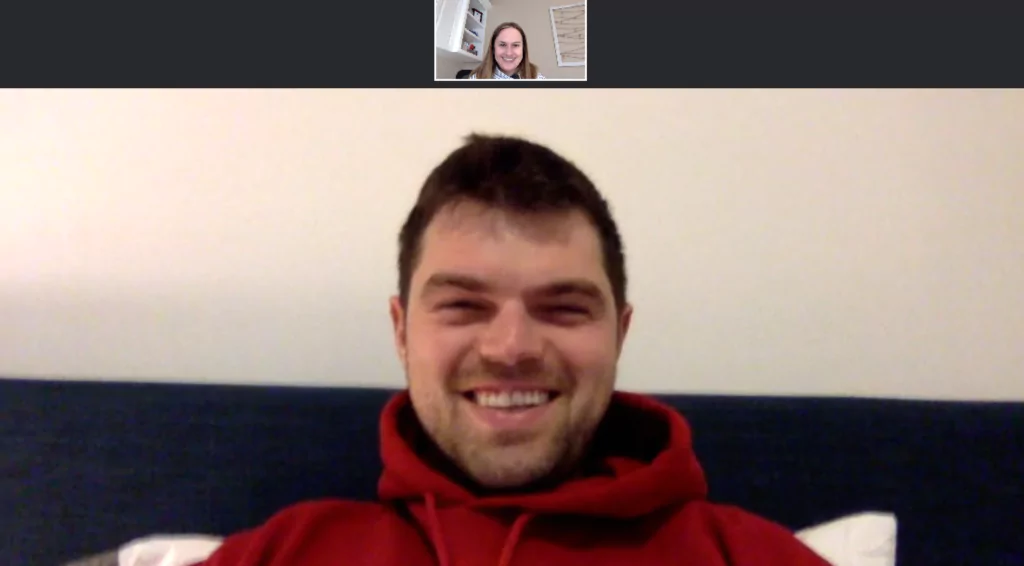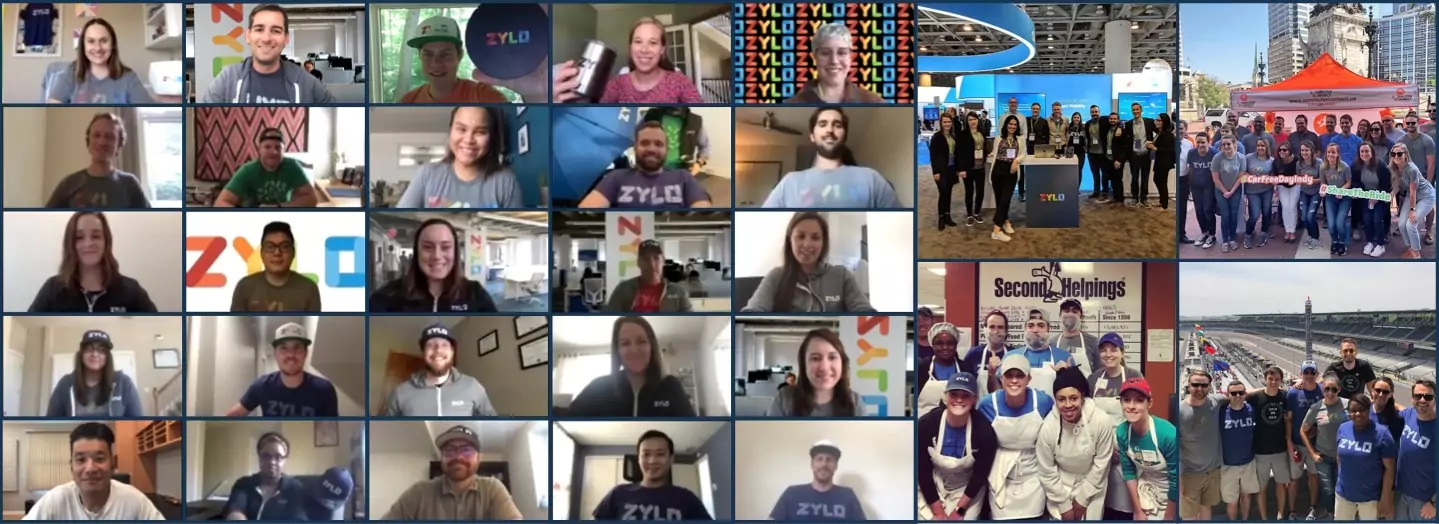
An Inside Look at Zylo’s Engineering Team
There’s never been a more exciting time to be an engineer...
Back
Back
Search for Keywords...
Zylife Blog

03/12/2020
With our interest to keep the health of our team, families, customers, and community at the forefront, we’re taking the opportunity to transition to working fully remotely for the foreseeable future.
While we love being able to work together in our office space, we are optimistic about going fully remote temporarily because we believe that cloud technology and SaaS have a unique ability to make work collaborative – no matter where work takes place.
Prior to this decision, we embraced remote work as a method to attract great talent across the country and with that, we had already developed a set of remote work best practices that work at Zylo. Today, we’re sharing what we’ve learned as we look to take our remote work employee experience to the next level.
SaaS and other cloud-based tools are what make remote work possible, but your teams have to be on the same page. Be explicit and clear about what the tools you’ll use for video conferencing, collaboration, project management, messaging, and other channels.
Since the age of SaaS includes plenty of functional overlaps between tools, it’s also important to prioritize what tools are used when. For example, as a company, we use Slack, Basecamp, and Gmail – but the use case for each is different, despite each having messaging capabilities. We’ve explicitly documented with our teams what the organizational approach is for each, for example:
Slack is to be used for group chats and more informal, real-time discussions. Basecamp is our project management space for file sharing, project updates, and long-term planning. Finally, Gmail is for communicating externally and more formal conversations that need to be documented. This seems obvious, but by clearly outlining the organization’s expectations for each platform, we’ve had significantly fewer “Did you see my _______ message?” conversations and missed opportunities to communicate clearly.
Another great thing to make explicit when prioritizing tools is the expected response time or service level for each platform. For example, a direct question email message should receive a response in less than 24 hours, but something like a direct question in Slack should be answered more quickly.
One of our company values is that “Trust starts with me.” Building trust through effective communication is a solid practice no matter where you’re working from, but it also forms the foundation of our remote work policy. Communication creates trust, which always starts with the individual.
This may seem obvious, but it can be the most difficult part of transitioning to remote work. In-office, in-person chats typically feel effortless, where communicating with a remote team requires a conscious effort (at first, at least).
Over-communication is always better than less communication, but there is a fine balance to strike between having an active presence with your remote team and avoiding micromanagement.
Provide real-time feedback, this is important all the time but even more so now. Give praise frequently and communicate as much as possible. For example, at Zylo we use a #praise channel in Slack where people can share recognition across teams and functions – it’s also tied to our talent management system, Lattice, so that praise translates directly toward performance.
If your team is all working together on a project, consider a daily standup via video conference. Ask yourself, how much of each project can be managed in tools like Basecamp with daily status updates and digital collaboration? (And speaking of Basecamp, check out this offer from founder and CEO Jason Fried).
Another important aspect of great communication is setting the right expectations of when and where you’re available. For us, this means clearly communicating availability in our shared Google Calendar and personal Slack statuses, as well as articulating our typical active working hours.
Finally, great communication requires great feedback. Here are some questions you can ask to get feedback and make remote work more effective:
One of the most notable absences with remote work is the togetherness that makes sharing an office a personable, human experience. Those passing moments in the break room or casual conversations with co-workers about weekend plans or family milestones add up to an in-person social network.

If you’re moving to a fully distributed workforce, don’t forget about making the moments that make work more fun. At Zylo, we use the Donut app on Slack to continue having casual coffee meet-ups with co-workers – even if those now take place via Zoom.
We also have active Slack channels where the Zylo team can share adorable or goofy pictures of pets or discuss video games or chat about an interesting podcast. The point is you don’t necessarily need to be in-person to promote the social cohesion we may take for granted as casual chit-chat.
Lastly, now that your team is remote, it’s essential to have regular communication and clear expectations around accountability. Goals and deadlines should be documented and crystal clear. As an organization, we use Lattice, which provides a number of ways to clearly define goals and update them regularly.
Make sure you know what each of your team member’s top priorities is for the week, month, and quarter and touch on them at each regular 1:1 meeting. The key to success is trust and setting the right expectations.
At Zylo, we use the OKR (Objective and Key Result) framework. I would encourage you to pick a framework that works for your company to align on key priorities and goals and accountability.
—
We hope you find the above useful as you make the jump to remote work. Making the change to a fully distributed and remote work culture isn’t easy, but if you’re already practicing the fundamentals of an effective and collaborative work environment, you’re well ahead of the game.

There’s never been a more exciting time to be an engineer...

As we enter 2021 with a greater awareness of the daunting...


Ryan Carman studied mechanical engineering before taking on business and data...
| Cookie | Duration | Description |
|---|---|---|
| cookielawinfo-checkbox-analytics | 11 months | This cookie is set by GDPR Cookie Consent plugin. The cookie is used to store the user consent for the cookies in the category "Analytics". |
| cookielawinfo-checkbox-functional | 11 months | The cookie is set by GDPR cookie consent to record the user consent for the cookies in the category "Functional". |
| cookielawinfo-checkbox-necessary | 11 months | This cookie is set by GDPR Cookie Consent plugin. The cookies is used to store the user consent for the cookies in the category "Necessary". |
| cookielawinfo-checkbox-others | 11 months | This cookie is set by GDPR Cookie Consent plugin. The cookie is used to store the user consent for the cookies in the category "Other. |
| cookielawinfo-checkbox-performance | 11 months | This cookie is set by GDPR Cookie Consent plugin. The cookie is used to store the user consent for the cookies in the category "Performance". |
| viewed_cookie_policy | 11 months | The cookie is set by the GDPR Cookie Consent plugin and is used to store whether or not user has consented to the use of cookies. It does not store any personal data. |
